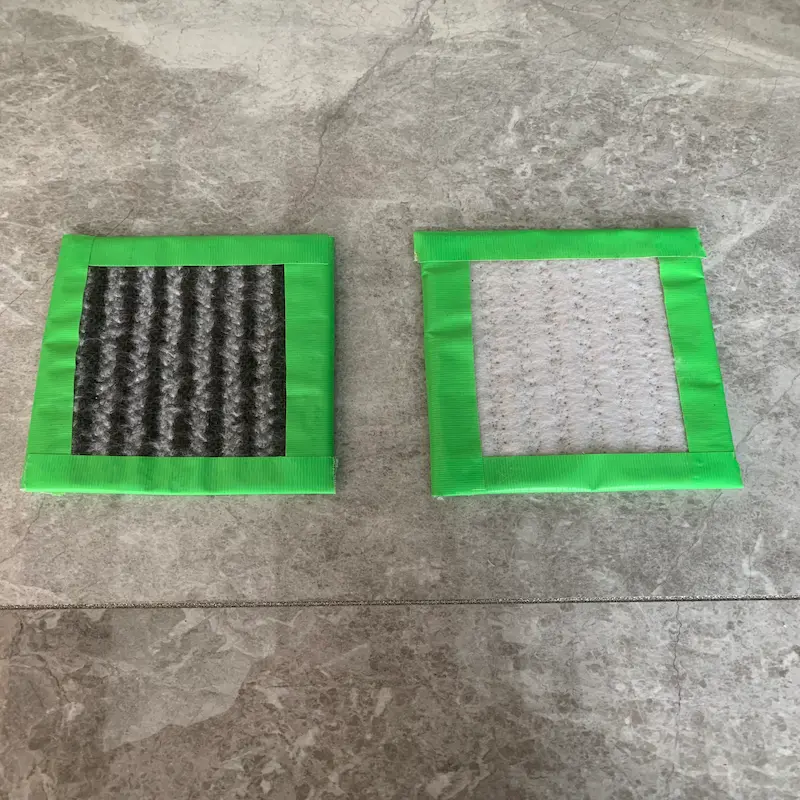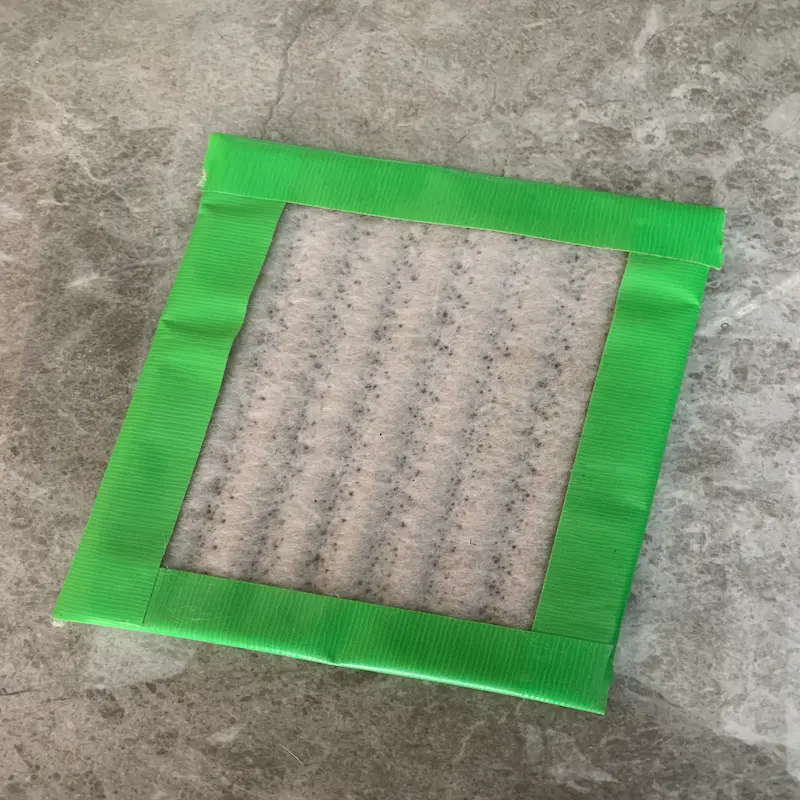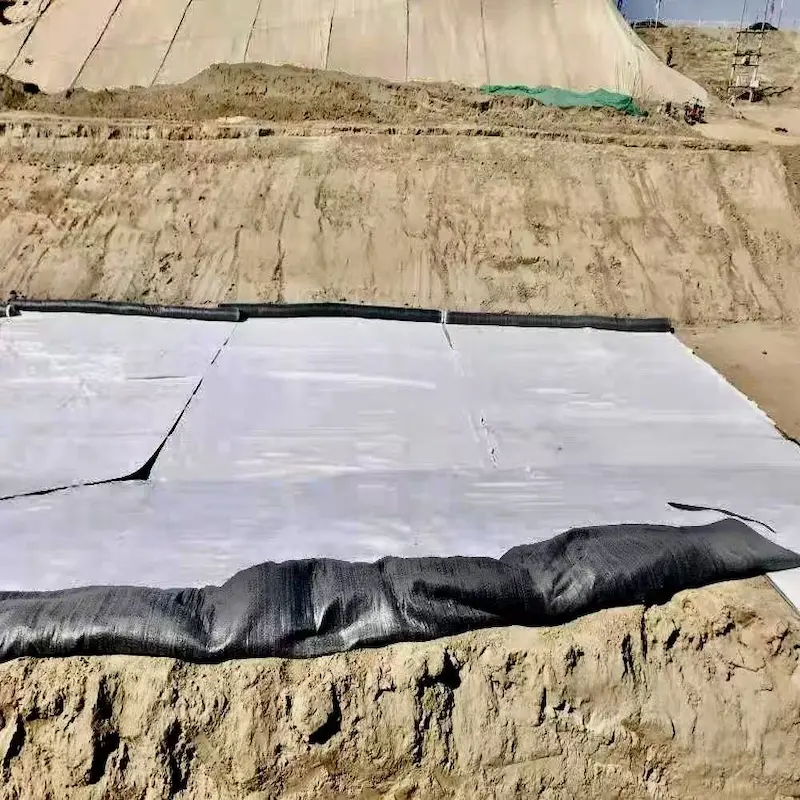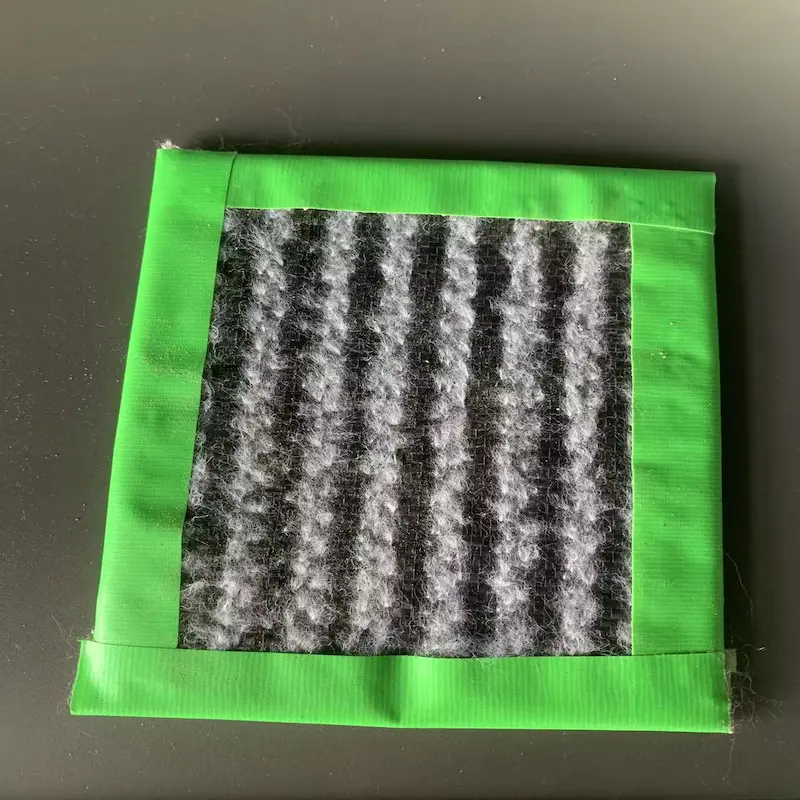What are Geosynthetic Clay Liners (GCL)?
Geosynthetic Clay Liners (GCLs) are composite materials made up of a layer of bentonite clay between two geotextile layers. They are primarily used for lining landfill sites, water reservoirs, ponds, and other containment structures to prevent the leakage of fluids like water, hazardous chemicals, or waste.

Key Features of GCLs:
· High impermeability: GCLs have a low permeability to liquids, ensuring effective containment.
· Durability: Resistant to UV degradation, mechanical stress, and chemical attack.
· Environmentally friendly: Unlike traditional liners, GCLs have a lower carbon footprint and are easier to install.
· Cost-effective: GCLs require less labor and time for installation compared to conventional alternatives like clay liners or geomembranes.
Why are GCLs Popular in Thailand?
Thailand, with its tropical climate and vulnerability to heavy rainfall, faces unique environmental challenges, particularly in the management of waste and hazardous materials. GCLs are increasingly used due to their ability to provide an effective waterproof barrier in landfills, mining operations, and other waste management systems.
Key Advantages of GCLs:
1. Cost-Effective: GCLs are often less expensive than traditional clay liners.
2. Ease of Installation: The lightweight and flexible nature of GCLs reduces transportation costs and installation time.
3. Durability: They are highly resistant to damage from UV rays, chemical degradation, and mechanical stresses.
4. Environmental Benefits: GCLs provide an eco-friendly solution by preventing leakage of contaminants into the surrounding environment.

Performance of GCLs in Thailand's Climate
Climate Considerations
Thailand’s tropical climate, characterized by high rainfall, humidity, and heat, requires materials that can withstand both wet and dry conditions. The use of GCLs is particularly suited to these conditions because of the following properties:
· Hydration Capability: Bentonite clay in GCLs swells and becomes impermeable when hydrated, which ensures a reliable barrier in the wet conditions of Thailand.
· Temperature Tolerance: GCLs can withstand the high temperatures typical of tropical climates without degrading.
Case Studies of GCL Use in Thailand
Several projects across Thailand have employed GCLs to manage waste and minimize environmental impact.
Project | Location | Application | Year | Outcome |
Ratchaburi Landfill | Ratchaburi | Waste Containment | 2017 | Reduced leachate leakage by 90%. |
Phuket Mining Site | Phuket | Tailings Management | 2020 | Increased efficiency in chemical containment. |
Bangkok Wastewater Plant | Bangkok | Wastewater Treatment | 2015 | Improved pond containment, reducing risk of contamination. |
These case studies show that GCLs are increasingly being adopted in various sectors to mitigate environmental risks.
Technical Specifications and Data
The performance of GCLs is heavily dependent on their technical specifications, such as the type of bentonite used, the quality of the geotextile, and the manufacturing process. Below are some important technical parameters for GCLs used in Thailand:
Specification | Standard | GCL Value |
Hydraulic Conductivity | ASTM D5887 | ≤ 5 x 10^-9 m/s |
Tensile Strength | ASTM D6637 | > 40 kN/m |
Thickness | ASTM D5199 | 6-8 mm |
Bentonite Content | ASTM D6102 | ≥ 300 g/m² |
Shrinkage | ASTM D5888 | ≤ 5% |
The data shows that GCLs used in Thailand have properties that ensure long-term performance, even under the challenging conditions of the tropical environment.
Benefits of GCLs in Thailand
1. Cost-Effectiveness: GCLs are cheaper to install than traditional compacted clay liners (CCLs), reducing the overall cost of waste containment projects. The reduced need for complex construction methods further adds to their cost-effectiveness.
2. Environmental Impact: By preventing the leakage of hazardous materials into the environment, GCLs protect Thailand's delicate ecosystems. This is particularly important in areas with significant agricultural or water resources, where contamination could have a severe economic impact.
3. Sustainability: The materials used in GCLs are sustainable and often recyclable, providing an environmentally friendly alternative to other forms of waste containment.
Applications of GCLs in Thailand
The primary applications of GCLs in Thailand are in waste containment systems, especially landfills, mining sites, and wastewater treatment plants. Below is a breakdown of their applications:
1. Landfills
Landfills are a major source of concern for environmental pollution in Thailand. GCLs are used to line the base of landfills to prevent leachate (toxic liquid that forms when waste decomposes) from contaminating the surrounding soil and groundwater.
2. Mining Sites
Mining operations in Thailand, particularly those involving precious metals, can generate large amounts of waste that need to be securely contained. GCLs are used to line tailing ponds and heap leach pads to prevent the escape of hazardous chemicals into the environment.
3. Wastewater Treatment
In wastewater treatment, GCLs serve as liners for containment ponds and treatment lagoons, where they help in isolating wastewater from the surrounding soil and aquifers.

Challenges and Considerations
While GCLs offer numerous benefits, there are some challenges associated with their use in Thailand:
1. Installation and Maintenance
Although GCLs are easier to install than traditional liners, proper installation is crucial to ensure their long-term effectiveness. Gaps, wrinkles, or defects can lead to leakage, which could compromise the containment system.
2. Durability in Extreme Conditions
While GCLs are durable, extremely harsh weather conditions, such as flooding or excessive heat, could potentially affect their performance. Regular maintenance and monitoring are required to ensure continued effectiveness.
3. Compatibility with Other Materials
In some applications, GCLs need to be used in combination with other materials, such as geomembranes or geotextiles. The compatibility of these materials with GCLs must be considered during the design phase to avoid issues during installation.
Conclusion
Geosynthetic Clay Liners (GCLs) have proven to be a reliable and cost-effective solution for waste containment and environmental protection in Thailand. Their advantages—such as ease of installation, environmental benefits, and cost-effectiveness—make them an ideal choice for industries dealing with hazardous waste, mining, and wastewater management. However, it is essential for engineers and project managers to consider the challenges involved, including proper installation and ongoing maintenance, to ensure optimal performance.
As Thailand continues to develop its infrastructure and industrial capabilities, the adoption of GCLs is likely to increase, playing a pivotal role in reducing the environmental impact of industrial activities. By integrating GCLs into a variety of applications, Thailand can ensure a safer and more sustainable future for its ecosystems and its people.

897.webp)
942.webp)
237.webp)